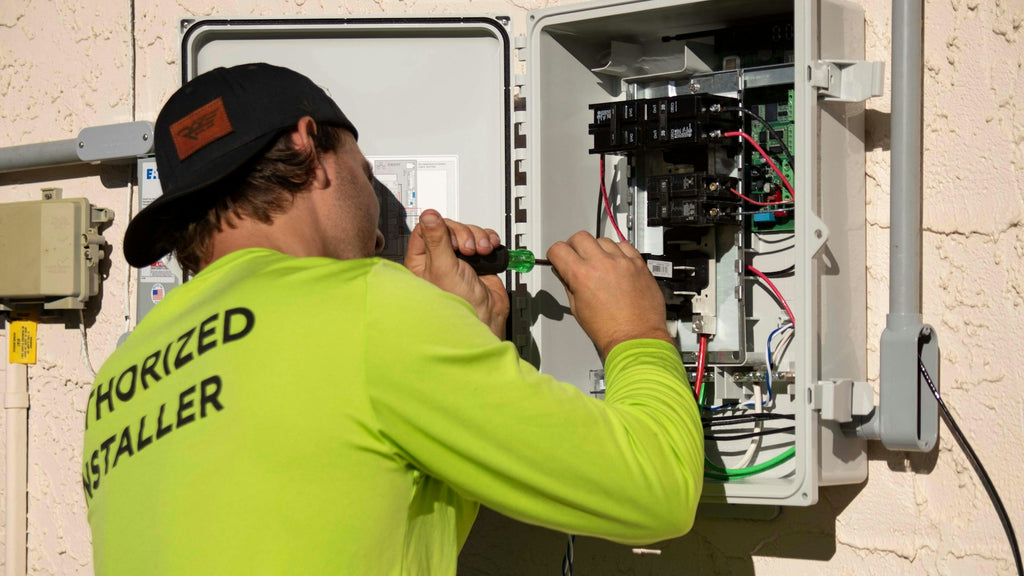Unlocking Solar Secrets: Common Inverter Issues and Easy Fixes You Need to Know!
In the world of solar energy, solar inverters play a crucial role in transforming the sunlight captured by solar panels into usable electricity. These devices ensure that the energy generated is efficiently converted and delivered to your home or business. However, just like any other technology, solar inverters can encounter problems that may hinder their performance. Understanding these issues is essential for any solar energy user. By being aware of common inverter problems and their solutions, you can ensure the longevity and efficiency of your solar system, making the most out of your investment.

Many solar users experience inverter issues at some point, which can be frustrating and confusing. Whether it’s a simple glitch or a more serious malfunction, knowing how to identify and resolve these problems can save you time and money. This article aims to shed light on the most frequent concerns associated with solar inverters and provide practical solutions to tackle them effectively.
Understanding Solar Inverter Problems
Solar inverters are the heart of any solar energy system, converting direct current (DC) electricity generated by solar panels into alternating current (AC) electricity that can be used in homes and businesses. There are several types of inverters, including string inverters, microinverters, and power optimizers, each serving a specific function. Regular maintenance and timely troubleshooting are essential to keep your inverter running smoothly and to ensure optimal energy production. Neglecting small issues can result in significant performance drops or even complete system failures, leading to costly repairs and decreased energy savings.
Common Inverter Issues
Despite their importance, solar inverters can face a variety of issues. Here are eight common concerns that users may encounter:
- 1. Inverter Not Turning On: This can be one of the most alarming issues, leaving users wondering if their system is functioning at all.
- 2. Overheating: Excessive heat can lead to underperformance and potential damage to the inverter.
- 3. Low Energy Production: When your solar system isn't producing as much energy as expected, it can be frustrating and confusing.
- 4. Error Codes Displayed: Many inverters have built-in diagnostics that display error codes when something goes wrong, but understanding these codes can be challenging.
- 5. Frequent System Shutdowns: Unexpected shutdowns can disrupt energy production and may indicate underlying issues.
- 6. Poor Communication with Monitoring System: A lack of communication with monitoring systems can prevent users from tracking energy production accurately.
- 7. Inconsistent Performance: Fluctuations in energy output can lead to unpredictability in your energy supply.
- 8. Noisy Operation: Unusual sounds coming from the inverter can be a sign of mechanical issues that need to be addressed.
Solutions to Common Inverter Problems
Here are practical solutions for each of the common inverter issues identified above:
- 1. Troubleshooting steps for Inverter Not Turning On: Start by checking the main power switch and ensuring that all circuit breakers are in the ON position. Inspect the inverter’s LED indicators for any signs of malfunction. If everything appears normal, try resetting the inverter according to the manufacturer's instructions.
- 2. Tips to prevent Overheating: Ensure that the inverter is installed in a well-ventilated area away from direct sunlight. Regularly clean the inverter’s exterior to remove dust and debris that may block airflow.
- 3. Adjustments to improve Low Energy Production: Verify that your solar panels are clean and free from obstructions. Check for shading from trees or buildings and consider trimming or relocating obstructions. Additionally, make sure that the inverter’s settings are optimized for your specific system.
- 4. How to interpret and address Error Codes: Refer to the inverter’s user manual for a list of error codes and their meanings. Most codes indicate specific issues that can be resolved by following the recommended troubleshooting steps.
- 5. Solutions for Frequent System Shutdowns: Investigate load conditions and ensure that the inverter is not being overloaded. Check the wiring connections and tighten any loose screws. If the problem persists, consult a professional technician.
- 6. Enhancements for better Communication with Monitoring System: Ensure that the internet connection is stable if your inverter relies on Wi-Fi. If using a wired connection, check the Ethernet cable for damage. Resetting the monitoring system may also help re-establish communication.
- 7. Ways to achieve Consistent Performance: Regular maintenance checks are crucial. Schedule annual inspections with a qualified technician to ensure all components are functioning correctly and that firmware is up to date.
- 8. Methods to reduce Noisy Operation: Check for loose parts or screws that may be causing rattling noises. If the noise persists, it may indicate a mechanical issue within the inverter that requires professional assessment.
Key Takeaways on Inverter Troubleshooting
Recognizing and addressing common solar inverter problems is vital for maintaining an efficient solar energy system. By applying the solutions outlined in this article, you can troubleshoot issues effectively and keep your inverter running smoothly. Regular maintenance and checks will not only enhance performance but also extend the lifespan of your solar inverter. Embrace the power of solar energy and ensure your system operates at its best by staying informed and proactive! For more detailed guidance, consider mastering solar inverter problems with our comprehensive troubleshooting guide.




